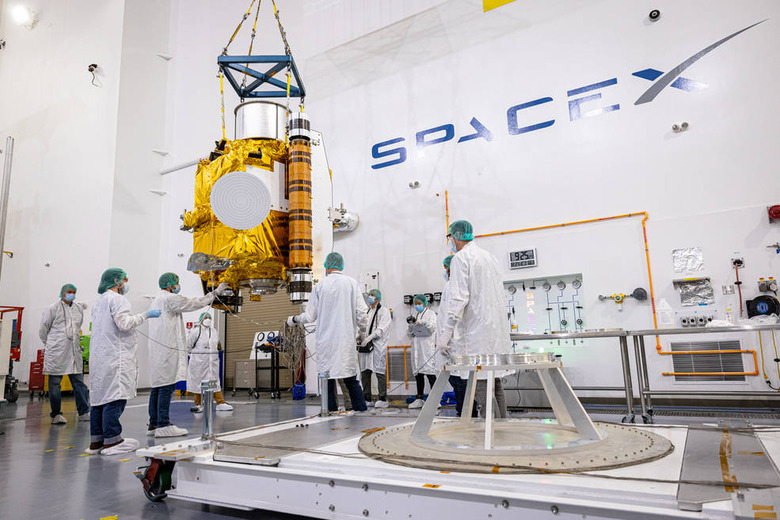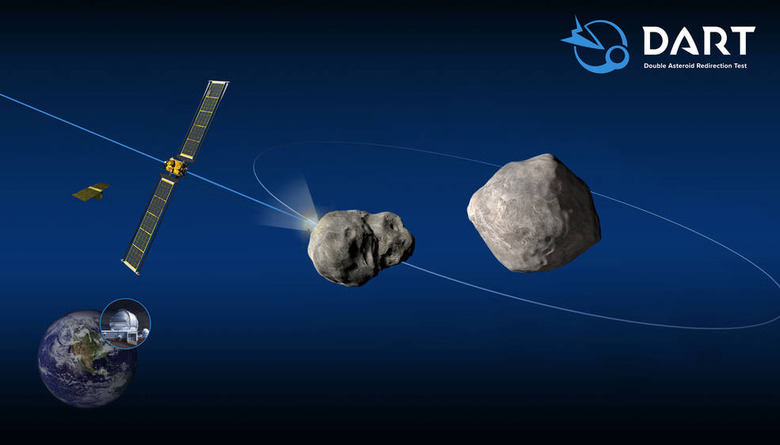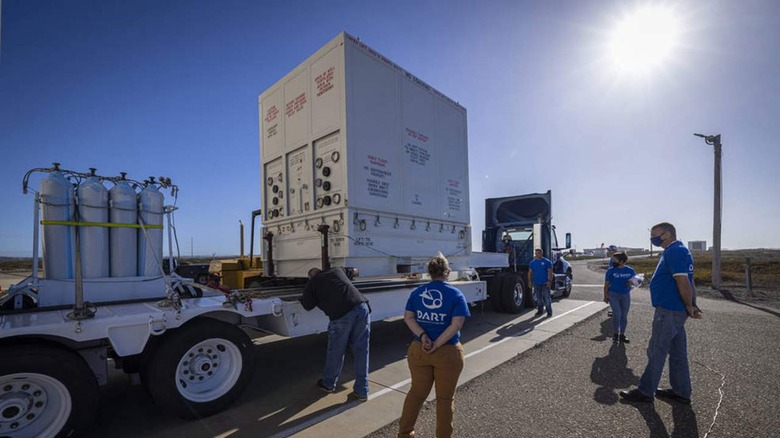DART Is Filled With Fuel And Ready To Launch On November 23
NASA has confirmed that its DART (Double Asteroid Redirection Test) mission is ready to launch on November 23. Crewmembers have performed the final tests of the spacecraft, have fueled it up, and are currently running dress rehearsals for launch. DART is a very important mission and is the first planetary defense test mission ever conducted.The mission will head for a small moonlet asteroid called Dimorphos orbiting a much larger asteroid called Didymos. DART will be intentionally smashed into Dimorphos in an attempt to change its orbit. NASA has been clear that there is no risk that either of these asteroids will impact the Earth.
However, NASA wants to learn if a kinetic impact of the spacecraft can change the orbit and trajectory of an asteroid should one pose a threat to the Earth in the future. Scientists will use telescopes on Earth to measure the impact effects on the asteroid system. NASA will then use the data gathered to enhance modeling and predictive capability to prepare for a real asteroid threat if one is ever discovered.

NASA says DART is the first "kinetic impactor" technique demonstration utilizing a spacecraft colliding with an asteroid at high speed. Scientists believe the kinetic impact technique is the most technologically mature method of mitigating a potentially hazardous asteroid. DART will help planetary defense experts refine computer models helping to improve plans for deflecting potentially dangerous asteroids.
DART has been under construction for over a year under pandemic imposed health and safety protocols, which have slowed construction. The spacecraft itself was assembled from various parts, including some technologies that will be tested on the mission, including the NEXT-C ion propulsion system. That special person system was designed to improve spacecraft performance and fuel efficiency for deep space missions.

DART is also being used to test a new high gain antenna design that is flat and slotted, expected to deliver more efficient communications between spacecraft and Earth. The only instrument aboard DART is called DRACO, which is an onboard camera. The spacecraft has a pair of solar arrays that are each 28 feet long and is fitted with an Italian Space Agency satellite called the LICIACube meant to capture images of the impact and the effect it has on the asteroid.

DART arrived at Vandenberg Space Force Base in California in early October. It arrived at the launch facility after being driven across the country from its build site. It entered the SpaceX Payload Processing Facility on October 26 and, after two days of inspections, was fueled with 110 pounds of hydrazine propellant. The propellant will allow the spacecraft to maneuver and control its attitude.
In addition to the hydrazine propellant, DART was also loaded with 130 pounds of xenon to power the NEXT-C ion engine. The next big date for DART comes on November 10, when it will be mated to an adapter that stacks on top of the SpaceX Falcon 9 rocket that will push it into orbit. Twenty-four hours prior to launch, the Falcon 9 with DART attached will be rolled from the hanger to the launchpad. It will utilize Space Launch Complex 4 East. The first opportunity for lift-off for the mission comes at 10:20 PM PST on November 23. Should the weather be an issue, the next launch opportunity comes on November 24. If November 24 doesn't work for some reason, subsequent launch attempts are available in February 2022.
